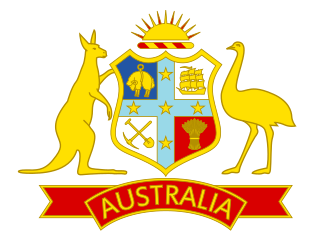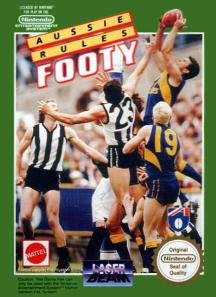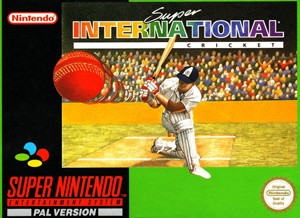
Mark Edward Waugh is an Australian cricket commentator and former international cricketer, who represented Australia in Test matches from early 1991 to late 2002, after previously making his One Day International (ODI) debut in 1988. Waugh was a part of the Australian team that won the 1999 Cricket World Cup.

Stephen Rodger Waugh is an Australian former international cricketer and twin brother of cricketer Mark Waugh. A right-handed batsman and a medium-pace bowler, Waugh is considered one of the greatest cricketers of all time. Waugh was a part of the Australian team that won their first world title during the 1987 Cricket World Cup. As Australian captain from 1997 to 2004, he led Australia to fifteen of their record sixteen consecutive Test wins, and to victory in the 1999 Cricket World Cup. Waugh is considered the most successful Test captain in history with 41 victories and a winning ratio of 72%.

The Australia men's national cricket team represents Australia in men's international cricket. As the joint oldest team in Test cricket history, playing in the first ever Test match in 1877, the team also plays One-Day International (ODI) and Twenty20 International (T20I) cricket, participating in both the first ODI, against England in the 1970–71 season and the first T20I, against New Zealand in the 2004–05 season, winning both games. The team draws its players from teams playing in the Australian domestic competitions – the Sheffield Shield, the Australian domestic limited-overs cricket tournament and the Big Bash League.

Jason Neil Gillespie is an Australian cricket coach and former cricketer who played all three formats of the game. A right-arm fast bowler, he was also a competent lower-order batsman whose unbeaten 201 in his last Test match is the highest score by a night-watchman in international cricket.

Matthew Lawrence Hayden is an Australian cricket commentator and former cricketer. His career spanned fifteen years. Hayden was a powerful and aggressive left-handed opening batsman, who along with opening partners, Justin Langer and Adam Gilchrist contributed heavily to Australia's success during its "golden era" (2004-2011) in Test and ODI cricket respectively. He is widely considered to be one of the best openers in Test cricket and holds the record of highest individual score by an Australian batsman, where he scored 380 against Zimbabwe during Zimbabwe's 2003 tour of Australia. This stands as the 2nd highest individual score in test cricket and is the highest score by an opening batsman in tests. Hayden was a member of the Australian team that won both the 2003 Cricket World Cup, and the 2007 Cricket World Cup.

The baggy green is a cricket cap of dark myrtle green colour, which has been worn by Australian Test cricketers since around the turn of the twentieth century. The cap was not originally baggy as evidenced by photographs of early players. The cap has long been a symbol of national pride in Australia, and was described by the chief executive of the MCC as the "most famous cricket cap in the world".

Krome Studios Melbourne, originally Beam Software, was an Australian video game development studio founded in 1980 by Alfred Milgrom and Naomi Besen and based in Melbourne, Australia. Initially formed to produce books and software to be published by Melbourne House, a company they had established in London in 1977, the studio operated independently from 1987 until 1999, when it was acquired by Infogrames, who changed the name to Infogrames Melbourne House Pty Ltd.. In 2006 the studio was sold to Krome Studios.

Darren Scott Lehmann is an Australian cricket coach and former cricketer who coached the Australian national team. Lehmann made his ODI debut in 1996 and Test debut in 1998. He was on the fringes of national selection for the entirety of the 1990s, and only became a regular in the ODI team in 2001 and Test team in late 2002, before being dropped in early 2005. Primarily an aggressive left-handed batsman, Lehmann was also a part-time left arm orthodox bowler, and gained renown for his disregard for physical fitness and modern dietary regimes. He announced his retirement from first-class cricket in November 2007. Lehmann was a member of the Australian team that won the 1999 Cricket World Cup and the 2003 Cricket World Cup, where in the 1999 final, he scored the winning boundary, and took the winning catch in the 2003 final.

Aussie Rules Footy is the first AFL simulation video game for the Nintendo Entertainment System. It was developed by Melbourne based Beam Software and published under their "Laser Beam" publishing title in 1992. The release was Australian-only with distribution handled through Mattel's Australian operations.
The England cricket team toured Australia during the 1986–87 cricket season for a five-match Test series to contest The Ashes. While in Australia, England also played a number of tour matches against state and representative teams, and competed in two One-Day International (ODI) tournaments. Under the captaincy of Mike Gatting, England retained the Ashes with a 2–1 series win.
Gregory Richard John Matthews is a New South Wales and Australian former cricket all rounder who is now a television cricket commentator.

In 2001, the Australia national cricket team toured England and Ireland to play county matches and the 2001 Ashes series. The Ashes series was played from 5 July to 27 August.

Super International Cricket is a cricket video game released in 1994 for the Super Nintendo Entertainment System, only in Australia and Europe. It is a sequel to International Cricket on the original Nintendo Entertainment System. The game was developed by Melbourne House, with Nintendo publishing the game. Nintendo also included the game with a Super NES console bundle in Australia.
The Australia national cricket team toured South Africa from February to April 1994 and played a three-match Test series against the South Africa national cricket team. The tour was Australia's first to South Africa since the end of the apartheid regime which had led to a sporting boycott of the country. Australia's most recent tour to South Africa had taken place in 1969–70 and a planned tour of the country in 1971–72 had been cancelled after the International Cricket Conference had imposed a moratorium on tours in 1970 and following the player withdrawals and protests which accompanied the tour of Australia by the South African rugby union side during 1971. The Australian Cricket Board postponed their proposed tour of Sri Lanka in order to schedule the series, paying A$50,000 compensation to the Board of Control for Cricket in Sri Lanka.
The Australian cricket team toured Pakistan in the 1988–89 season. The teams played three 5-day Tests and 3 ODI's. Pakistan won both series 1 - 0. Javed Miandad and Bruce Reid were declared Man of the Series.
The Australian cricket team toured New Zealand in the 1985–86 season to play a three-match Test series and four-match one day series against New Zealand after NZ had toured Australia earlier in the season.
The Bicentennial Test was a single Test cricket match played between Australia and England at the Sydney Cricket Ground in celebration of the bicentenary of permanent colonial settlement in Australia. The match took place from 29 January to 2 February 1988 and was drawn. It did not count as part of The Ashes series, in the same way as the Centenary Tests in 1977 and 1980 also were excluded from the Ashes lists.
Variations of Australian rules football are games or activities based on or similar to the game of Australian rules football, in which the player uses common Australian rules football skills. They range in player numbers from 2 up to the minimum 38 required for a full Australian rules football.
The AFL video game series is a series of Australian rules football video games based on the AFL. Released originally by Beam Software, it has since been developed by several other game developers.
The Australian cricket team toured the West Indies in the 1990–91 season to play a five-match Test series against the West Indies.











